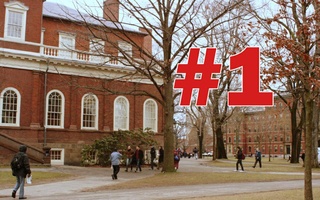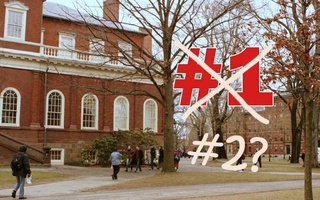“We are all just looking for an opportunity to be a hero,” says M. Ray Williams, the first Director of Education at the Harvard Art Museums. Williams refers to the Sackler Museum’s “Stories: The Epic Tradition” series, which consists of three sets of performances held two weeks apart on Wednesday afternoons and evenings through November 10. Storyteller Xanthe Gresham performed the Shahnameh epic during the first event last Wednesday.
The Shahnameh performance celebrated the millennial anniversary of the poem written by Ferdowsi, and long considered the masterpiece of medieval Persian poetry. “The museum has a small installation all about the story, so it seemed like the perfect reason to bring in a storyteller who specialized in this material,” Williams says.
The afternoon performances of the series are aimed at children, while evening shows are directed at adult audiences. The matinee show focuses on stories more appropriate for children, becoming interactive for these younger attendees.
“It is a natural thing to sit and listen; it’s nice to sit and tell stories to different generations,” Xanthe Gresham says.
“We have a mostly student and adult audience here at the museum, so this was an experiment to see if we could appeal to an after-school crowd,” Williams says. Although few children attended the first day, Williams hopes that this will change and allow these epics to reach a broader audience.
Attendees such as Cambridge resident Naomi C. Stephens and her friend Sabrina S. Dejoannis valued the exciting material and Gresham’s method of delivery. “I had really high hopes, and this is wonderful; this was a great performance,” Dejoannis says.
Stephens also appreciated that the series brings unfamiliar stories to a new audience. “Children [from places like Bangladesh] read these like children here read fairy tales,” Stephens explains.
Gresham agrees that epics are still relevant in the modern world. “When you tell a story you appeal to the child in the adult. Stories are a healing thing, but you can’t say how or why,” she says. “Through the ages people have used stories [in] different ways—that, in fact, is how religions use stories—but every storyteller has to be responsible for what meaning they want to get across to the audience.”
“We like something big in our lives, because our lives are small in comparison,” Gresham adds. “Epic characters, mythical characters, have big actions and big feelings—our actions will never be as big as their actions, but our feelings are. So when you put them into epic context we get an epic space for our epic feelings. Even if our own actions seem small, the epic will make them huge.”
The excitement surrounding Gresham’s storytelling inspired Williams to schedule additional performances devoted to the epic. “Having a storytelling series provides another link to art that we don’t normally display in the galleries,” Williams says. “Our audience isn’t necessarily expecting storytelling. They are expecting art history lectures—this is what we’ve taught them to expect—so it just seemed like it would be thoughtful in terms of building momentum to have a series of stories.”
Continuing the series, storyteller Odds Bodkin takes the stage next with a performance of the Odyssey on October 27. The final presentation will be of the Ramayana on November 10, performed by Surabhi Shah and Mesma Belsare. This new version of the Ramayana will be told through the perspectives of three female characters, bringing novelty to a canonical text. These storytellers also plan to integrate such forms as dance and music into their presentations.
Even with these new interpretations of classic pieces, the core of the performances remains to tell stories of the human experience. As Williams says, “These stories, even when they are from long ago and far away—they speak to us.”
Read more in Arts
‘Drewe’ Revels in Tedious MayhemRecommended Articles
-
Cinemanic: Will Anna be a Crowning Achievment or an Epic Disaster?Film Preview Anna and the King Directed by Andy Tennant Starring Jodie Foster, Chow Yun Fat 20th Century Fox Pictures
-
 Say Yes to Drugs, Tear Down This Wall!
Say Yes to Drugs, Tear Down This Wall! -
Organizing IntegrationIn 1960, the student group known as the Emergency Public Integration Committee drew attention to anti-segregation activism.
-
 U.S. News Says We're Number One!
U.S. News Says We're Number One! -
 We're Not Number One—Says Who?
We're Not Number One—Says Who? -
Crimson To Take On BryantLooking to continue a two-game winning streak, the Harvard men's basketball team will travel to Bryant on Wednesday for a ...













